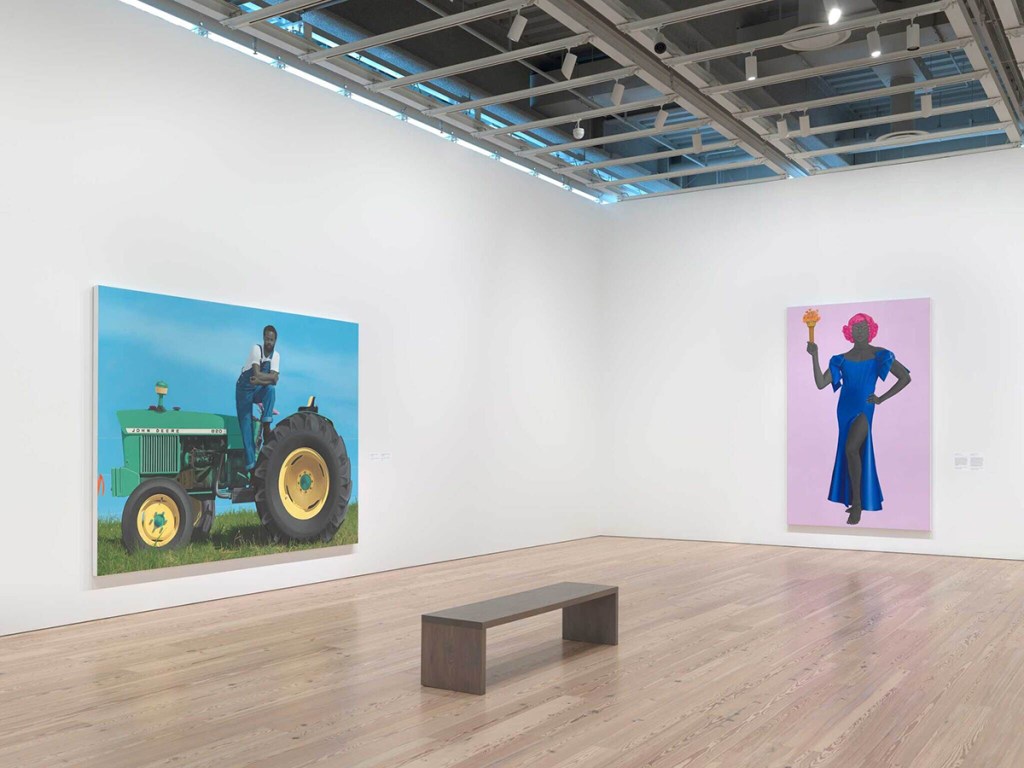Amy Sherald‘s exhibition “American Sublime” is now expected to open at the Baltimore Museum of Art (BMA) in November. The announcement follows the artist’s decision to cancel the iteration planned at the Smithsonian in July amid censorship concerns.
“Presenting American Sublime at the BMA is a celebration of our creative community and a joyful reunion with those shaped by Amy’s extraordinary power to connect,” BMA museum director Asma Naeem said in a statement. “We’re thrilled to share her transformational work with our visitors.”
Related Articles

The show will be a kind of homecoming for the artist, who attended the Maryland Institute College of Art (MICA) and spent part of her career in Baltimore. Her work was previously acquired by the BMA and she also formerly served on the museum’s board.
“Baltimore has always been part of my DNA as an artist. Every brushstroke carries a little of its history, its energy, its people, and my time there. To bring this exhibition here is to return that love,” Sherald said in a statement.
Sherald became a household name in 2018 thanks to her portrait of Michelle Obama. Today, she is best known for her pensive pastel renderings of Black Americans imbued with melancholy and joy, underpinned by the political realities of American life.
“American Sublime” features some 50 works by Sherald, making it one of the largest and most comprehensive presentations of her work yet. It was originally organized by the San Francisco Museum of Modern Art and subsequently traveled to the Whitney Museum, where it is on view through August 10. The iteration set for the Smithsonian’s National Portrait Gallery would have marked the first solo presentation of its kind by a Black contemporary artist at the institution.
In July, Sherald chose to cancel the Smithsonian iteration, however, after the museum considered removing her painting of a Black transgender Statue of Liberty, the New York Times reported, instead replacing it with a video of reactions and a discussion of trans concerns. Sherald objected over concerns that the video would include anti-trans views.
A Smithsonian spokesperson recently clarified with the Washington Post that Lonnie G. Bunch III, the secretary of the Smithsonian who runs the Portrait Gallery, wanted the video to accompany the painting, adding that the museum reportedly offered to further contextualize her work.
Last month, however, Sherald spoke out in an op-ed article about government censorship at the Smithsonian. Therein, she cautioned: “Museums are not stages for loyalty. They are civic laboratories. They are places where we wrestle with contradictions, encounter the unfamiliar and widen our circle of empathy. But only if they remain free.
“If they do not, we lose more than exhibitions. We lose the public spaces where imagination takes a stand against power. And when that happens, the stories we inherit and the futures we can envision will no longer be our own.”
A couple weeks before Sherald officially canceled her show, it was reported that Smithsonian Institution’s exhibitions would undergo a review by the White House, which claimed the institution’s shows have skewed too far from “the greatness of our nation or the millions of Americans who have contributed to its progress” and should, instead, “celebrate American exceptionalism”.
The White House subsequently released a list targeting specific artworks housed within the institution.
Following weeks of speculation about how the institution would respond, including a lunch meeting between Bunch and President Donald Trump, Bunch announced in a letter to staff on Wednesday that the institution has assembled a team to review materials to be handed over to the White House, ultimately stressing that the Smithsonian remains independent.
Though the Smithsonian receives about two-thirds of its $1 billion annual budget from the federal government, it is not considered a federal entity.

